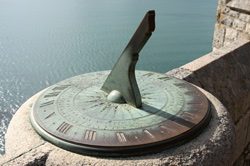I have always enjoyed mathematics. Inside and outside of the classroom I enjoyed doing mathematical activities and games and I was good at them! My main reason for enjoying maths in the past has been because there is always only one answer. It does not matter
how you get to this answer as long as you get there somehow. I was taught by my maths tea cher that even if you had to look at the answer and then work backwards then that was okay. As long as you found how to come to the answer after working backwards. I found this useful to know as it taught me that you can come at things from different
cher that even if you had to look at the answer and then work backwards then that was okay. As long as you found how to come to the answer after working backwards. I found this useful to know as it taught me that you can come at things from different
angles and still get the right answer.
I was always told “Oh, you have a maths brain” or people were shocked to find out I enjoyed math, saying things like “You like maths?!. Liking math is mostly a foreign concept for a lot of people. I was always use to this. I did not realise how much anxiety several people held on to relating to maths until I started this module. Several people think that they are bad at math without even trying maths activities. This must be a massive issues for teachers when they teach maths to children that hold on to these mentalities.
I cannot believe that this module has came to an end. Even though I picked it because of my love of math, I did not realise it would be as interesting as it was. This module has made me look at the world in a completely different way. It has made me see the mathematics in the world around us. At times, I have felt extremely confused, shocked or disbelieving after lectures or inputs from this module. This was mostly because I could not believe the areas that we were being told mathematics related to. However, the best feeling was when I would feel confused halfway through a lecture and then understand what we were being taught by the end. I have seen the whole class, even those who did not enjoy maths usually, go through these feelings. The nicest thing at the end of this module is to see the people that had math anxiety at the beginning say that have enjoyed this module.
Lastly, I would tell anyone to take this module. I have thoroughly enjoyed it as well as enjoyed being able to tell my family where there is mathematics in the things that they do. If you have not previously been good at math or hated it. Take this module! It will change your life!












 he Golden Ratio is 1.61803398875. If you take any of the numbers in the Fibonacci sequence and divide the bigger one by the smaller one you will always get close to the Golden Ratio. If I take 34 and 21, the result is 1.61904 which is the Golden Ratio! The Golden Ratio can be found in several buildings throughout history though there is no evidence whether these buildings were built purposely using this ratio. Buildings that are an example of this are Notre Dame, Taj Mahal, the Parthenon in Greece and even the Egyptian Pyramids.
he Golden Ratio is 1.61803398875. If you take any of the numbers in the Fibonacci sequence and divide the bigger one by the smaller one you will always get close to the Golden Ratio. If I take 34 and 21, the result is 1.61904 which is the Golden Ratio! The Golden Ratio can be found in several buildings throughout history though there is no evidence whether these buildings were built purposely using this ratio. Buildings that are an example of this are Notre Dame, Taj Mahal, the Parthenon in Greece and even the Egyptian Pyramids.


